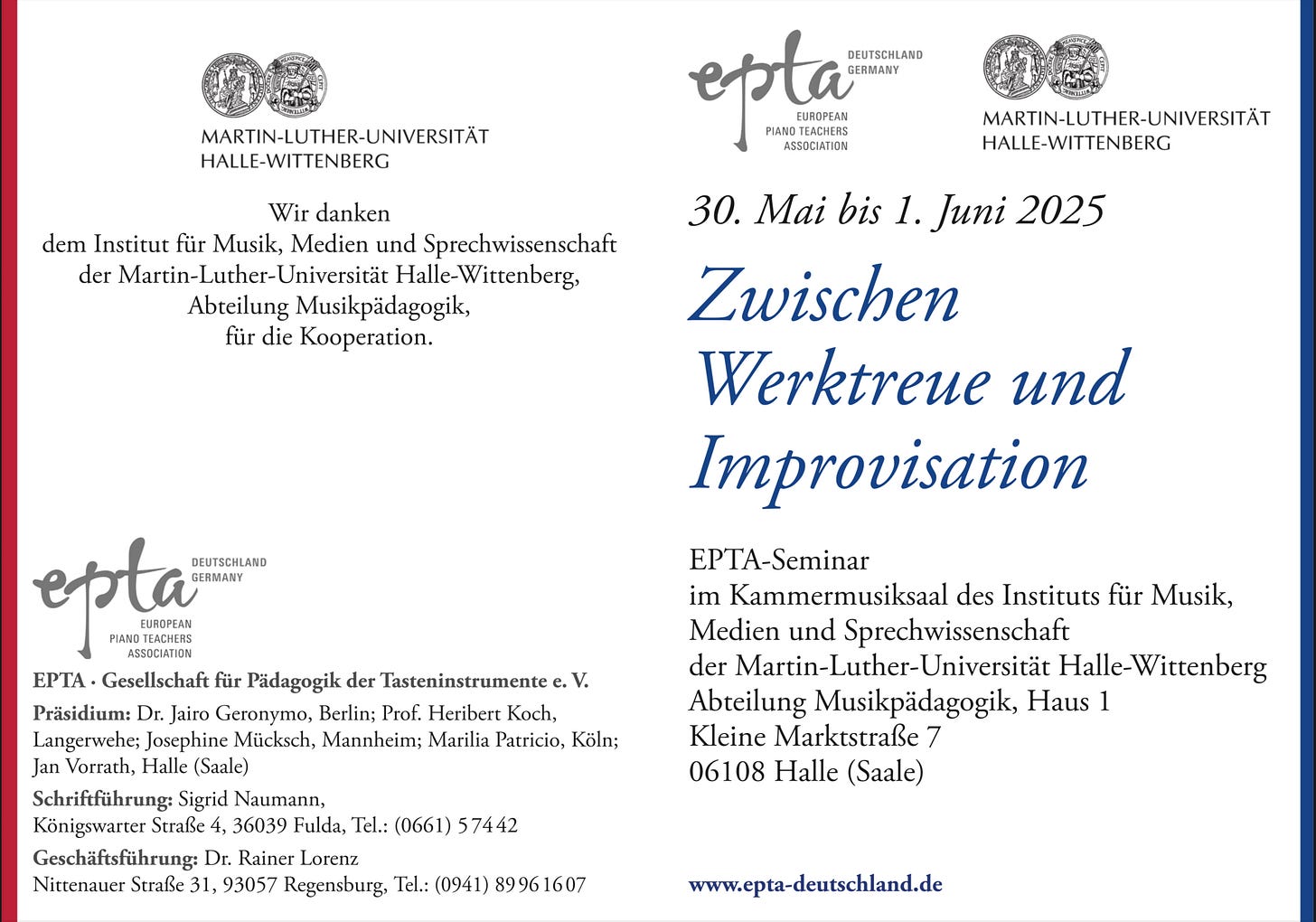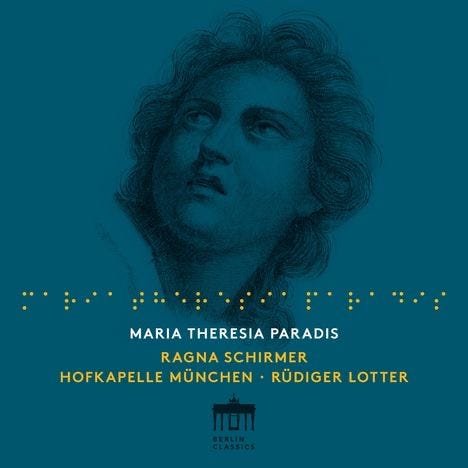Between Fidelity to the Work and Improvisation
EPTA Germany’s Spring Conference 2025
I’ve just got back from a weekend in beautiful Halle an der Saale, birthplace of Händel, where I spent 3 days in the company of about 100 pianists and teachers, members of the German wing of the European Piano Teacher‘s Association.
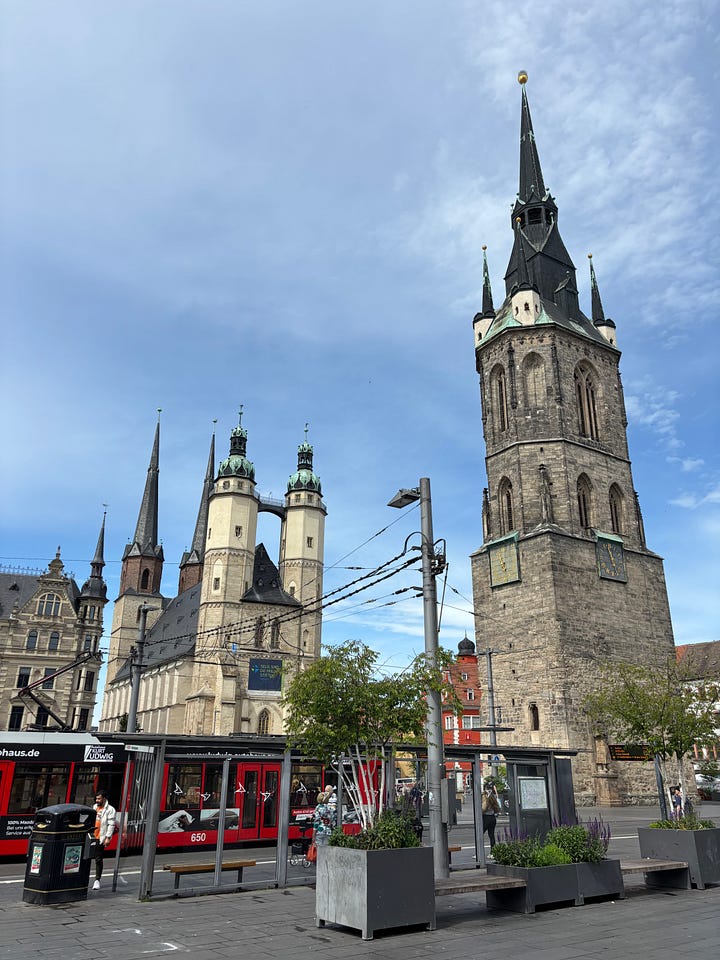
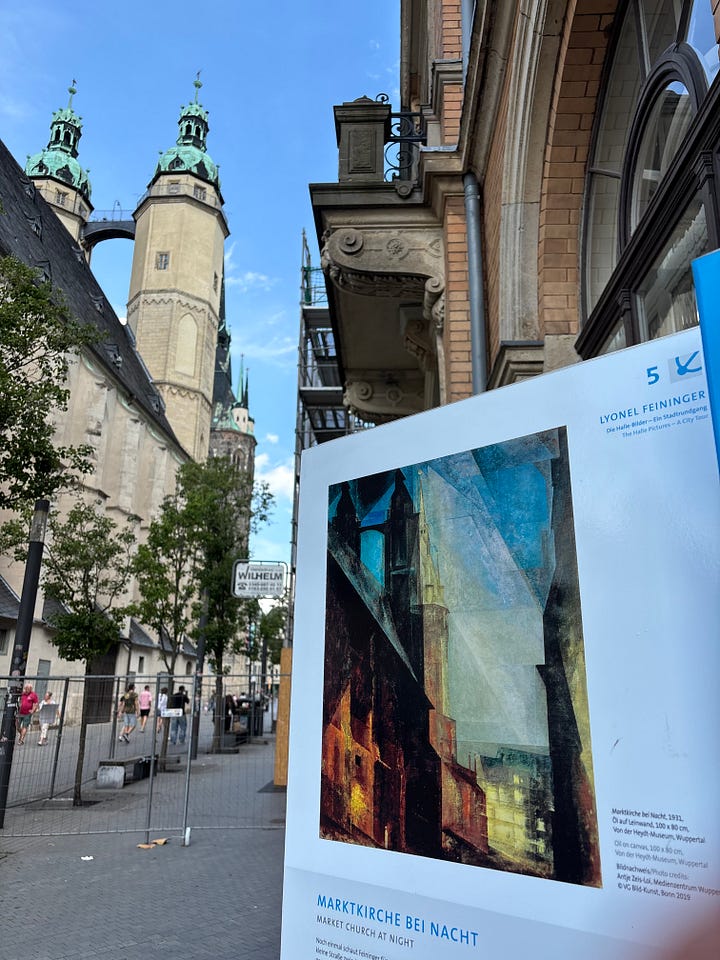
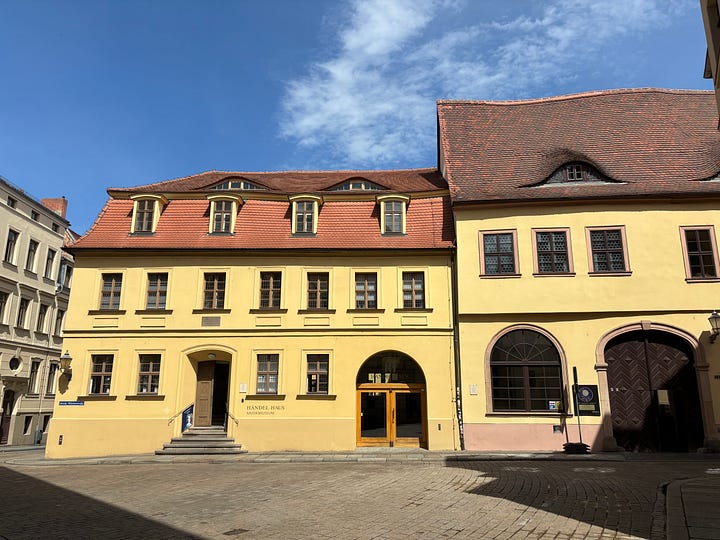
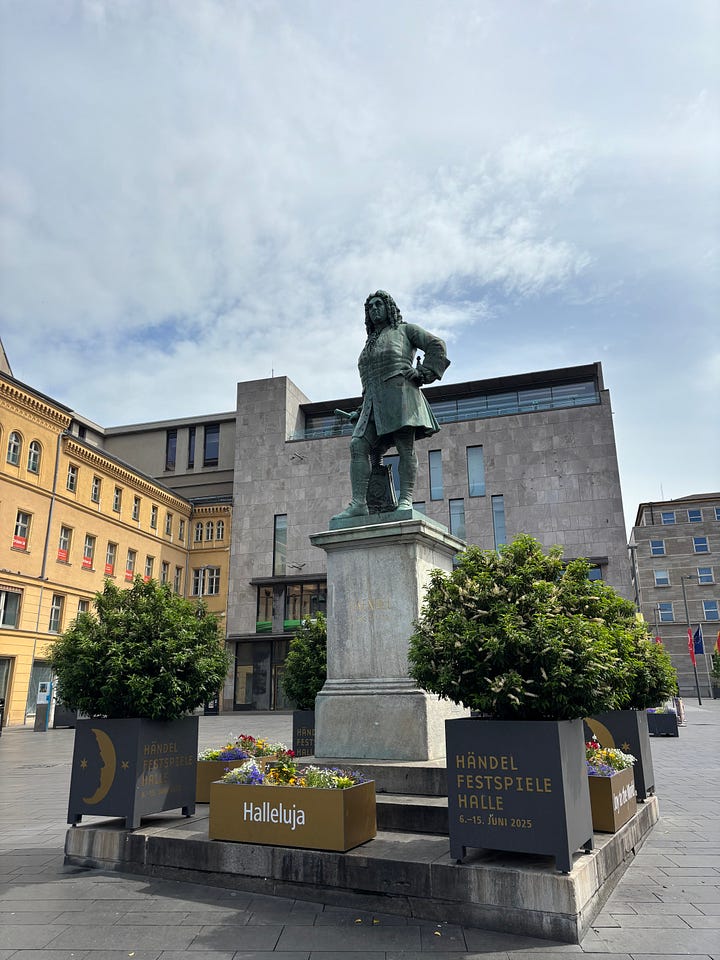
The conference title was Zwischen Werktreue und Improvisation, which I translate as “between fidelity to the work and improvisation”.
Unfortunately Werktreue doesn’t translate elegantly; the rather clumsy phrase “fidelity to the work” will have to do.
In the conference we explored the spectrum between strictly following a composer’s intentions and developing our own creative interpretations of the composer’s work.
As you can probably imagine, this is right up my street, and I really want to pay tribute to the leadership team of EPTA Germany for having such an open-minded attitude.
Eagle-eyed readers will remember that I’ve already written about this back in October, and that’s because this is actually the second conference on the same topic.
I’m going to share some of the highlights from the conference here.
(All the talks were in German. I believe I managed to follow them fairly well but my German is not perfect and there may be misunderstandings. Any mistakes are my own.)
Ways to creativity
Charlotte Bleser from Plön kicked off the conference with an inspiring talk titled “I create the world as I like it: the many ways to access inspired piano playing”. She posited that every human has the potential to be an artist and it is the job of the teacher to help them figure out what kind of artist they want to be, not to mould them into a preconceived form (I couldn’t agree more!)
She played several videos from her lessons where she demonstrated how she engages her elementary students in explorative improvised activities at the piano, and encouraged teachers to ask their students the following questions:
What do you see?
What do you hear?
What do you feel?
Crucially, she argued that when teachers allow students to find their own words to answer these questions, we foster the development of their artistic personality.
Creativity as play
Felix Mahr’s talk encouraged teachers to create musical games to deepen student’s theoretical and aural understanding. Games are well suited for is task because studies have demonstrated that they increase student engagement and the efficiency of learning. He argued that games should be used not to teach a theory/aural topic, but rather to review student understanding in an entertaining way.
Particularly relevant for us was his demonstration of improvisation games. A teacher might for example create a musical rule that the student has to follow (e.g. “copy the rhythm but play different keys”) and then students take it in turn to improvise based on the rule, resulting in a collaborative creation.
Creativity through repetition
Composer Christoph Keller’s talk was titled “The Ostinato: Ways to Improvise and Compose”. He described the ostinato as the link between improvisation and composition, because it can be used in both free and fixed creation. He played various pieces built around an ostinato, using them as examples of how we could create similar discourses of our own. He particularly highlighted the power of what he called “Nähe und Distanz” (near and far), by which he primarily meant the structural tension created when the music surrounding the ostinato is harmonically dissonant/consonant with the ostinato itself.
Creative arrangements
Michael Haag from the prestigious Bärenreiter publishing house talked about the challenges of writing the perfect piano reduction of an orchestral score, a very apt topic for the conference. Describing the process as akin to “trying to square a circle”, he talked about trying to find a balance between including everything essential from the orchestral original, while allowing the reduction to be playable with two hands on a piano keyboard. I had a lot of sympathy for him as someone who has often struggled to write a convincing piano arrangement of a pop song, albeit the Bärenreiter team are working on a far more complex scale!
Is fidelity in conflict with creativity?
Concert pianist Ragna Schirmer gave the final talk, a fascinating discourse titled “Steht der kreative Umgang mit Notentext im Konflikt zu Werktreue?” (Does the creative interpretation of scores conflict with fidelity to the work?)
She opened by playing the Passacaille from Händel’s Suite No. 7 in G minor, which is a wonderful demonstration of the importance of interpretative creativity when performing Baroque keyboard music because you were expected to do more than just what’s written in the original score, which is based largely on the same four-bar chord sequences played in different variations.
If you want to do a deep dive, there’s a fascinating comparison video of various different performances of the piece here:
She told many entertaining and illuminating anecdotes to illustrate the complexity of her opening question, before coming to the conclusion that Werktreue for her means asking if she could look the composer in the eyes after performing their music. Did she convey die Botschaft zwischen den Noten (the message between the notes), even if she didn’t play every note perfectly as written in the score? If yes, she was werktreu.
She ended with a really beautiful message, which was das Musizieren ist eine Auseinandersetzung mit unsere Menschlichkeit. One suggested translation of this is “Music making is a confrontation with our humanity”.
That doesn’t quite capture the subtlety of her message because “Auseinandersetzung” (one of my favourite German words) has several layers of meaning and is difficult to translate. One long-winded semi-literal way of translating it is “to take something apart so as to understand it more fully”, but as the screenshot below shows, it’s a word that implies struggle, analysis, interaction, and even discord.
The idea that we have to struggle with something to understand it is profound, and I think it’s an important and—maybe paradoxically—an inspiring message for anyone struggling with their creativity.
She ended by playing a wonderful track from her new album highlighting Maria Theresia Paradis, a composer and pianist who lost her sight at an early age, but who toured Europe as a pianist performing concertos by both Haydn and Mozart.
Conclusions
The conference theme reminds us just how relevant creativity is in all aspects of music-making at the piano.
It’s a very good sign that organisations like EPTA are highlighting and exploring it in such a nuanced way.
I’m very glad to be a member of EPTA Germany and of EPTA UK. Both offer many benefits for a very affordable annual membership fee. If you’re not a member, I would highly recommend joining.



